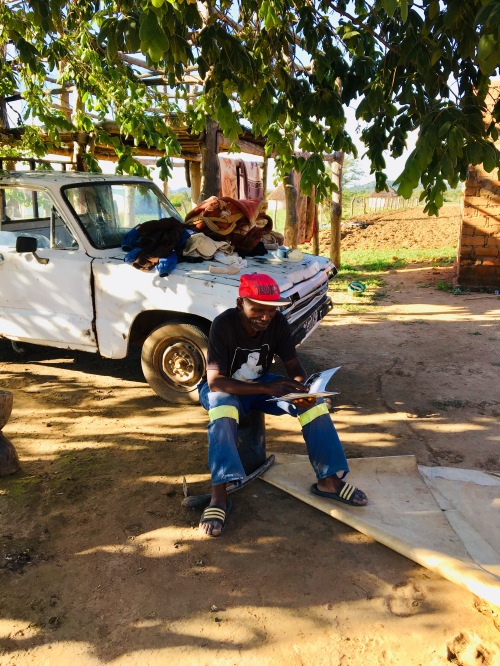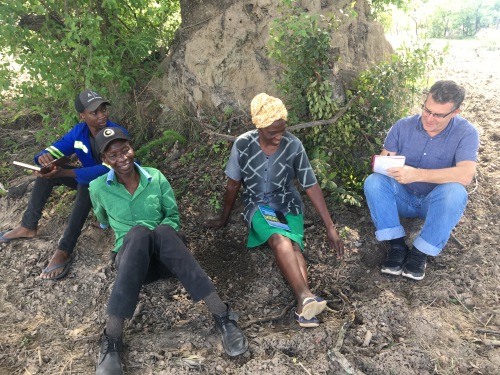Twenty years ago the news was filled with stories about land invasions in Zimbabwe. Since then, a group of us have been working in Masvingo province in particular (but also now in Mazowe in Mashonaland Central and Matobo in Matabeleland South) attempting to offer research-based reflections on what happened to people’s livelihoods. Since 2008, this blog has been dedicated to an informed discussion of the ramifications of the land reform, aiming to counter some of the misinformed debate that sadly is still evident, even 20 years on.
The research has been based on long-term field studies in a number of sites. We have been collecting crop production data on many sites continuously, and this has been complemented with more detailed census surveys, exploring demography, land use, asset ownership, labour practices, and off-farm income earning, amongst a whole host of questions. We have also carried out focused enquires on themes that have emerged, like young people’s livelihoods, medium-scale farms, changing land tenure governance, rural towns, small-scale irrigation, amongst much more. As a recent blog series documented, we have also been exploring the comparisons between resettlement and communal areas, testing the assumption that redistributing more land has resulted in improved livelihoods (by and large it has). We have tried to draw out of this research some overarching policy conclusions, and attempted to relay them to government, donors and other researchers through various fora.
Over time, we have tried to share our results in various forms. At last count there were 18 journal articles published from our research, and our 2010 book – Zimbabwe’s Land Reform: Myths and Realities – remains a key text. Since then two books – Debating Zimbabwe’s Land Reform and Land Reform in Zimbabwe: Challenges for Policy– have been published that pull together a number of blogs into themes, with short introductions to the issues. Aimed at disseminating in our field sites (see picture below), we have also produced several booklets (in English and Shona) and two video series. The Conversation has published a few overviews of research over time, including a set in early 2018 aimed at informing the new land reform policy debates emerging then.
This post introduces a new blog series, based on new data that have just been analysed. The series examines how people are faring in our Masvingo province land reform area study sites, based on a census survey during 2019 that repeated earlier rounds in 2006-7 and 2011-12. The survey was followed up by extensive qualitative discussions with various informants across the sites. To conclude the study, at the end of last year, we visited many of our land reform sites across Masvingo province to catch up with people there. They were fascinating visits, as we have been working in these areas since the early 2000s, soon after they were settled following the ‘fast-track’ land reform of 2000.
There are 16 sites, stretching from Gutu in the north to Mwenezi in the south, covering A2 (medium-scale) and A1 farms, including originally over 400 households. The A1 farms include those that are ‘self-contained’ (more like small A2 farms really) and the more common ‘villagised’ arrangements, including those that are well-established in Gutu and Masvingo districts and those that are more ‘informal’ (some without ‘offer letters’, permits to occupy the land) in Chiredzi and Mwenezi districts.
This blog series reflects on our preliminary findings, both from the quantitative survey and the qualitative interviews, focusing on each resettlement category. The series concludes with a very provisional reflection on how things have changed over time, with some ideas about the future. The analysis is only very tentative, and the material deserves more time to go into depth. While there are important changes and nuances to the land reform story, the ‘myths’ about Zimbabwe’s land reform that we challenged in our first book in 2010 remain myths, and there is a much more complex reality.
A number of important themes emerge across the blogs, with implications for the future. In all sites there is deepening social differentiation, with some being able to accumulate while others are struggling. This is creating new labour relations, as some become wage labourers for others. Changing environmental conditions are mentioned frequently, as climate change impacts intensify, making the diversifications into small-scale irrigation vital. This is especially important for women and young people, especially those who cannot gain access to land and have few opportunities for off-farm employment given the state of the Zimbabwean economy. Despite the clear challenges of farming, successes are concentrated in the A1 schemes, with most A2 farms struggling due to lack of financing. Successful A1 agriculture is driving local growth and investment, especially in rural towns. The story is diverse and complex, and will become more so as a result of the COVID-19 pandemic.
As Zimbabwe (again) contemplates a new land policy, and undertakes wider assessments through the Zimbabwe Land Commission, having data to inform interventions now remains important.
This post was written by Ian Scoones and first appeared on Zimbabweland. Led by Felix Murimbarimba, the Masvingo team is: Moses Mutoko, Thandiwe Shoko, Tanaka Murimbarimba, Liberty Tavagwisa, Tongai Murimbarimba, Vimbai Museva, Jacob Mahenehene, Tafadzwa Mavedzenge (data entry) and Shingirai, the driver. Thanks to the research team, ministry of agriculture officials and the many farmers who have supported the work over the years.
Post published in: Agriculture



